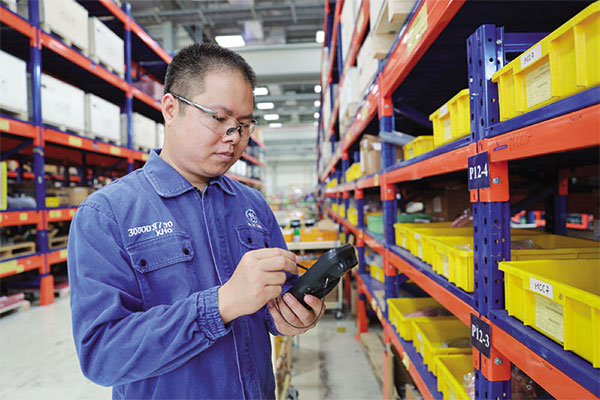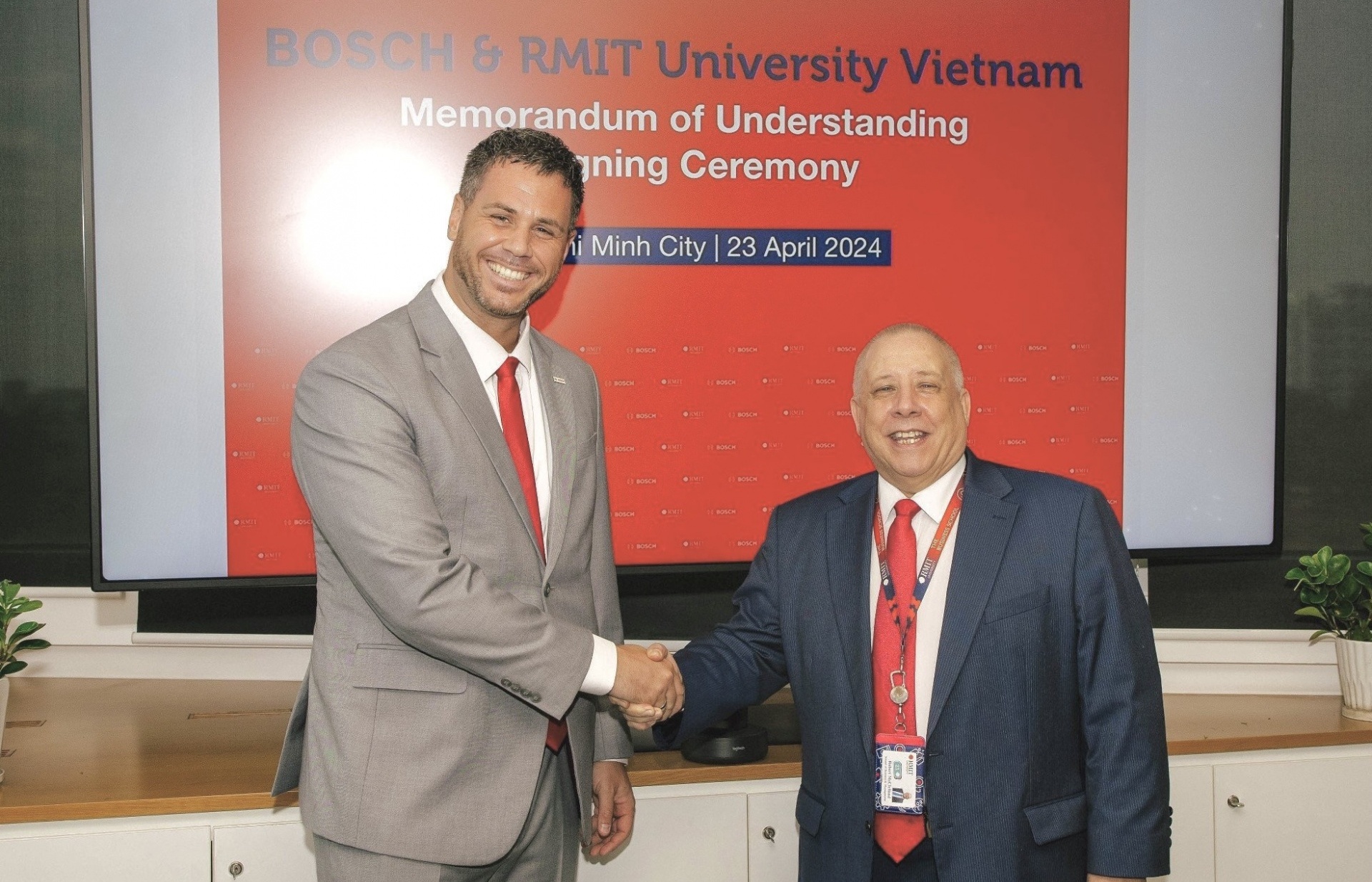How machines and minds can reboot manufacturing
 |
| While the spectre of automation hovers over the future of industrial production, GE’s factories have shown how the future can work with the past. With re-skilling practices in place, robots can increase, not replace, workers’ productivity. |
In the report, these nations – called the Mighty 5 or MITI-V – represent a potential “new China” in terms of labour, agile manufacturing capabilities, favourable demographic profiles, and market and economic growth. But what will be the impact of technology on these new manufacturing centres?
The rise of robots, automation, and additive technologies will impact manufacturing industries in both higher- and lower-cost countries, creating tensions through new potential jobs losses. Addressing these real concerns over automation and the future of work has been the focus of discussions at the APEC Economic Leaders’ Week in Danang.
The potential economic and real human impact is enormous. By connecting machines and drawing insights from the ensuing data, the Industrial Internet could add $10 trillion to global GDP over the next 20 years. We estimate this impact is at least twice as great as the consumer internet. The challenge for governments and business leaders alike will be harnessing this profound change to deliver benefits to the society and people.
Across the globe, countries and companies have demonstrated that they can benefit from new technology, while also securing high-impact, high-value jobs for their citizens. What we are seeing is that they are not eliminating jobs as people often fear, but are changing the jobs that workers are doing and bringing manufacturing into a sustainable future.
A recent study by McKinsey found that half of all activities in the workplace could be automated by 2055, but that any productivity gains will rely on people working alongside machines. Success in this new context will not be determined by working more cheaply, but by working more intelligently.
Highly automated factories
Tapping into this enormous opportunity will require new ways of working, and of thinking about work.
GE has a unique advantage here. Our 125 years of industrial know-how combined with digital expertise has acquired us in-depth understanding about the physics and the digital side of industrial assets as well as the structure of workplaces. To see how robots can and will transform manufacturing, let us take a look at two GE factories and how they are handling the integration of new technology.
At GE, our factories vary widely in age. Our Bromont factory in Canada has been part of our company story for decades – and then we have new facilities like Haiphong in Vietnam, which we opened in 2011. What is the common equation across all our manufacturing operations? Investing in technology and workforce development in equal measure.
We support up-skilling, reskilling, and changing mindsets to let employees take control of their systems and processes. In other words, we train our employees to manage robots and automation, not to resent them.
Our newer facility in Haiphong does about $500 million in annual exports, making it a significant contributor to the Vietnamese economy. When things are going well, it is easy to get comfortable and stop innovating, but Haiphong gave themselves a couple of bold goals for the future: phasing out manually-intensive labour, paperwork, and non-value-adding jobs, along with eliminating waste and optimising manufacturing processes. To achieve this, they have put in place welding robots, crane-free operations, and moving line manufacturing. Using digital tools to help welding increased efficiency from 12 to 30 per cent, while smart torque improved quality control in manufacturing and increased productivity by 5 per cent.
Bromont, while a much older factory, has a similar robotics story. They introduced robots in their facility back in the 1990s, and now have 180 robots in place to do 50 million repetitive tasks that humans used to do by hand. By introducing robots, they have also been able to reduce their cycle time and scaled from making 4,500 aircraft engine parts in 1983 to more than 3.3 million parts in 2017 – while also increasing employee numbers. The factory has also witnessed a significant decrease in incidents with increased automation. Overall, Bromont has become one of our most productive sites and a hub for advanced robotic processes, software applications, and intellectual property that is exported around the world.
The biggest change in both locations, however, has taken place in employees’ minds. In Haiphong, operators can identify and tackle waste. Engineers can analyse data and make decisions to improve safety and quality. Maintenance can anticipate servicing and spare parts, while management can make more timely decisions. Overall productivity at the Haiphong factory has increased by 20 per cent. While in Canada, a participative management culture greatly contributed to the gains in Bromont. None of this would be possible without empowered employees who can see firsthand that technology can help them and will not take over their jobs.
Employee-robot relations
Whether we are looking at our operations in Vietnam, Canada, or elsewhere, it is important to note that the change in management required for robotics and automation has been participatory. Employees have not been replaced: they now manage robots and production lines.
In order to make this possible, employees were involved in every stage of process improvement and production planning.
Where facilities were once dominated by manual tasks, we now have production that only involves skilled labour. These changes in both technology and working practices underline why the next phase of manufacturing will involve a race to the top – and robots.
Technology will have a defining impact on the entire manufacturing industry, in established and emerging locations.
The critical decision for both companies and countries is how they manage this change. It will be companies that do not simply roll out the robots, automation, and other technology, but train and involve employees in this transformation who will survive – and thrive – in this new era.
By Wouter Van Wersch President andCEO of GE ASEAN and ANZ
| RELATED CONTENTS: | |
| GE’s digital transformation surfs the Industry 4.0 wave | |
What the stars mean:
★ Poor ★ ★ Promising ★★★ Good ★★★★ Very good ★★★★★ Exceptional
Latest News
More News
- Vietnam: A land of milk, honey, and concrete (November 12, 2017 | 18:05)
- APEC week boosts Vietnam’s appeal (November 12, 2017 | 17:56)
- APEC minister vow to boost co-operation (November 11, 2017 | 14:00)
- Japanese firms sign $5-billion raft of deals with Vietnam (November 10, 2017 | 11:00)
- First VBS kicked off in Danang (November 07, 2017 | 17:10)
- Ford’s continuing efforts to make Vietnam’s roads safer (November 07, 2017 | 16:08)
- Viet Nam is trying to improve itself: PM (November 07, 2017 | 15:34)
- PM delivers keynote speech at Viet Nam Business Summit (November 07, 2017 | 11:34)
- APEC Vietnam 2017 special publication now available (November 07, 2017 | 11:32)
- Four Vietnamese entrepreneurs to attend APEC CEO Summit (November 06, 2017 | 20:38)










 Mobile Version
Mobile Version